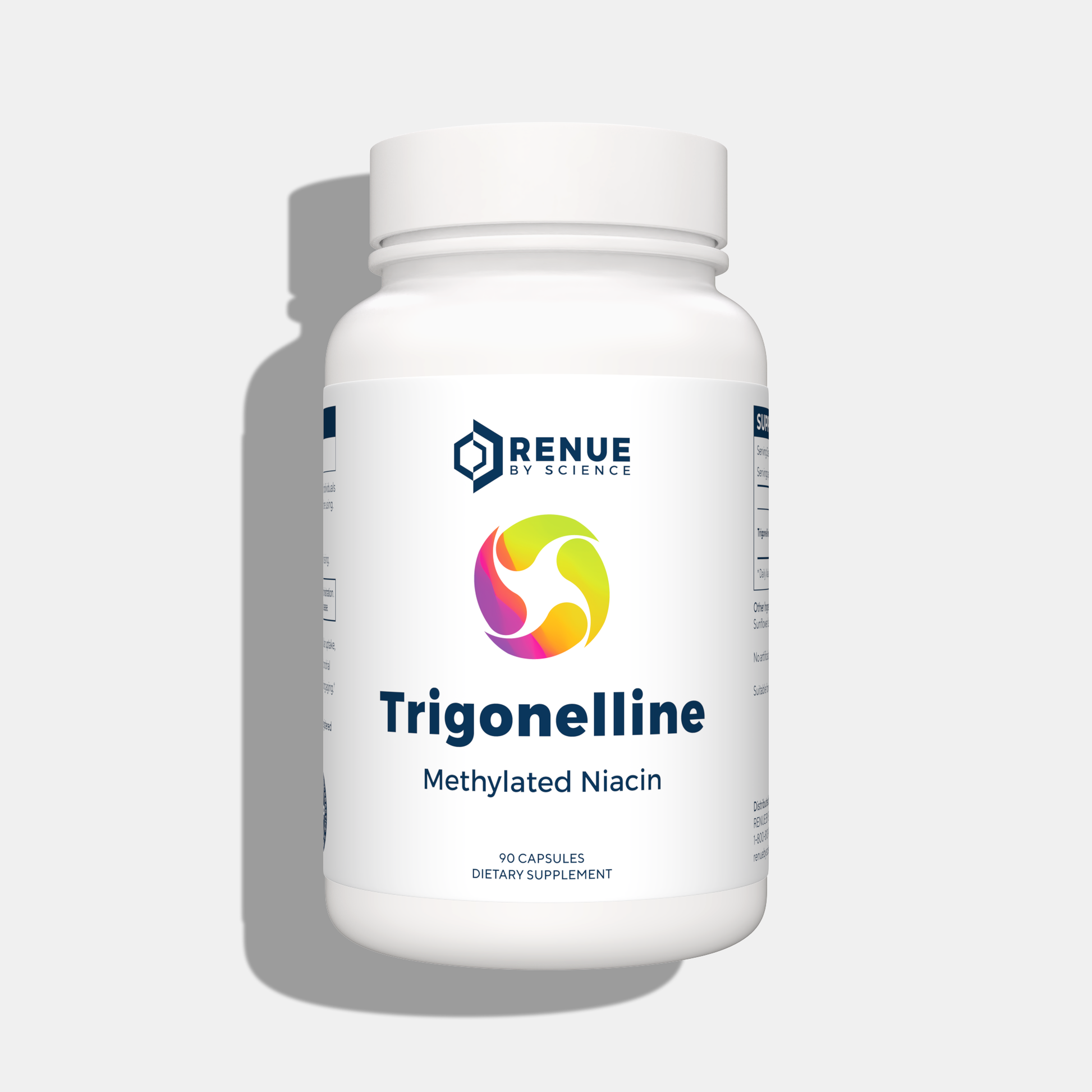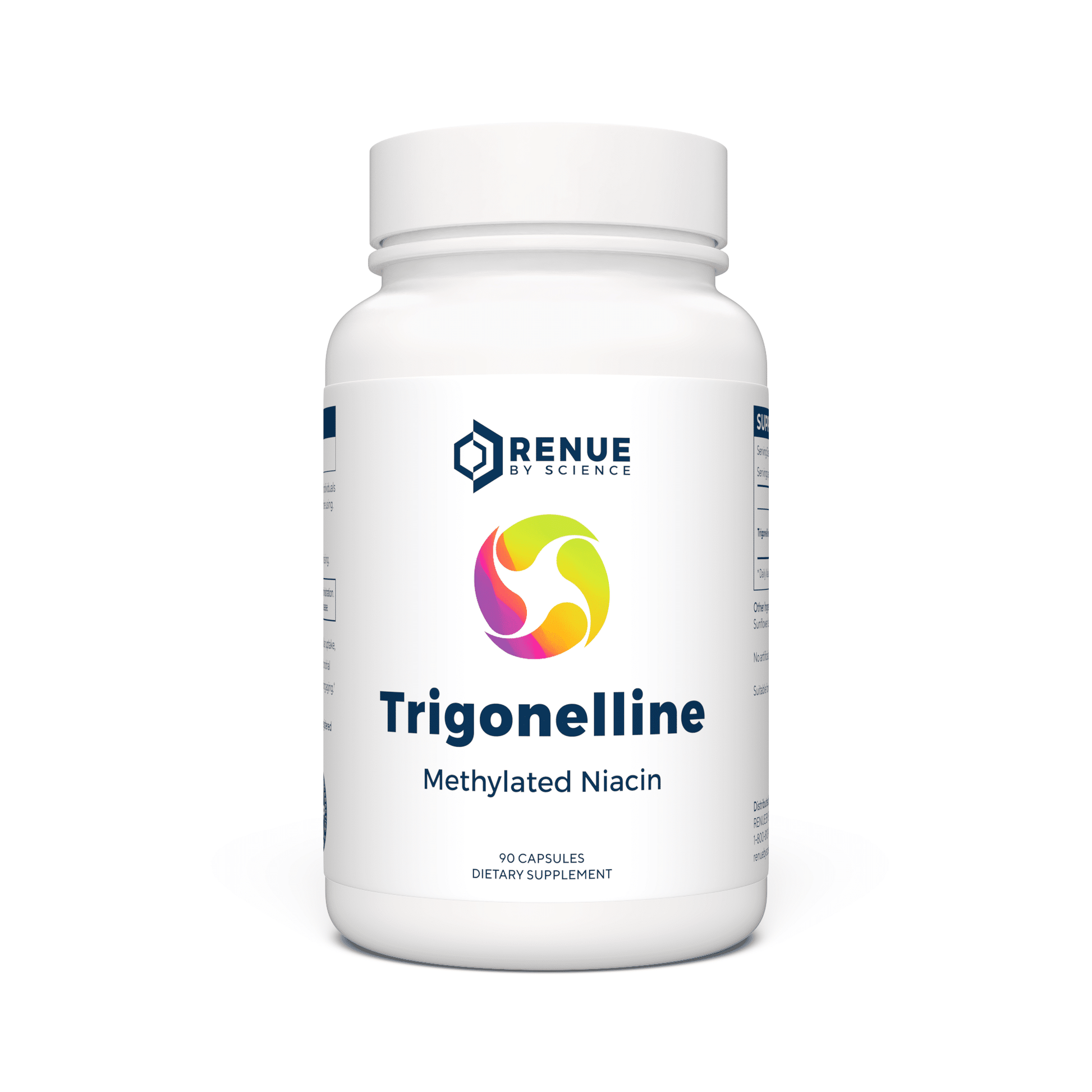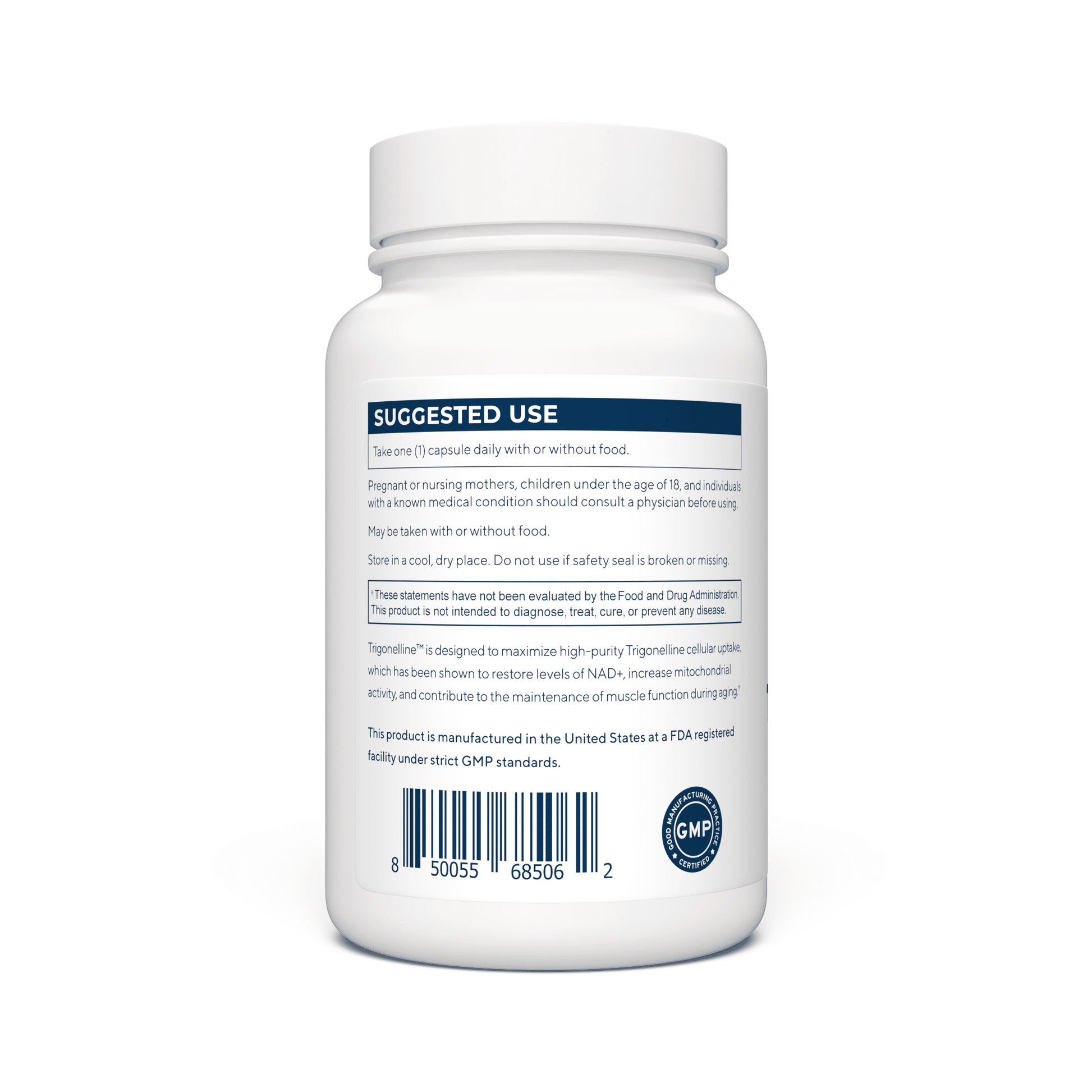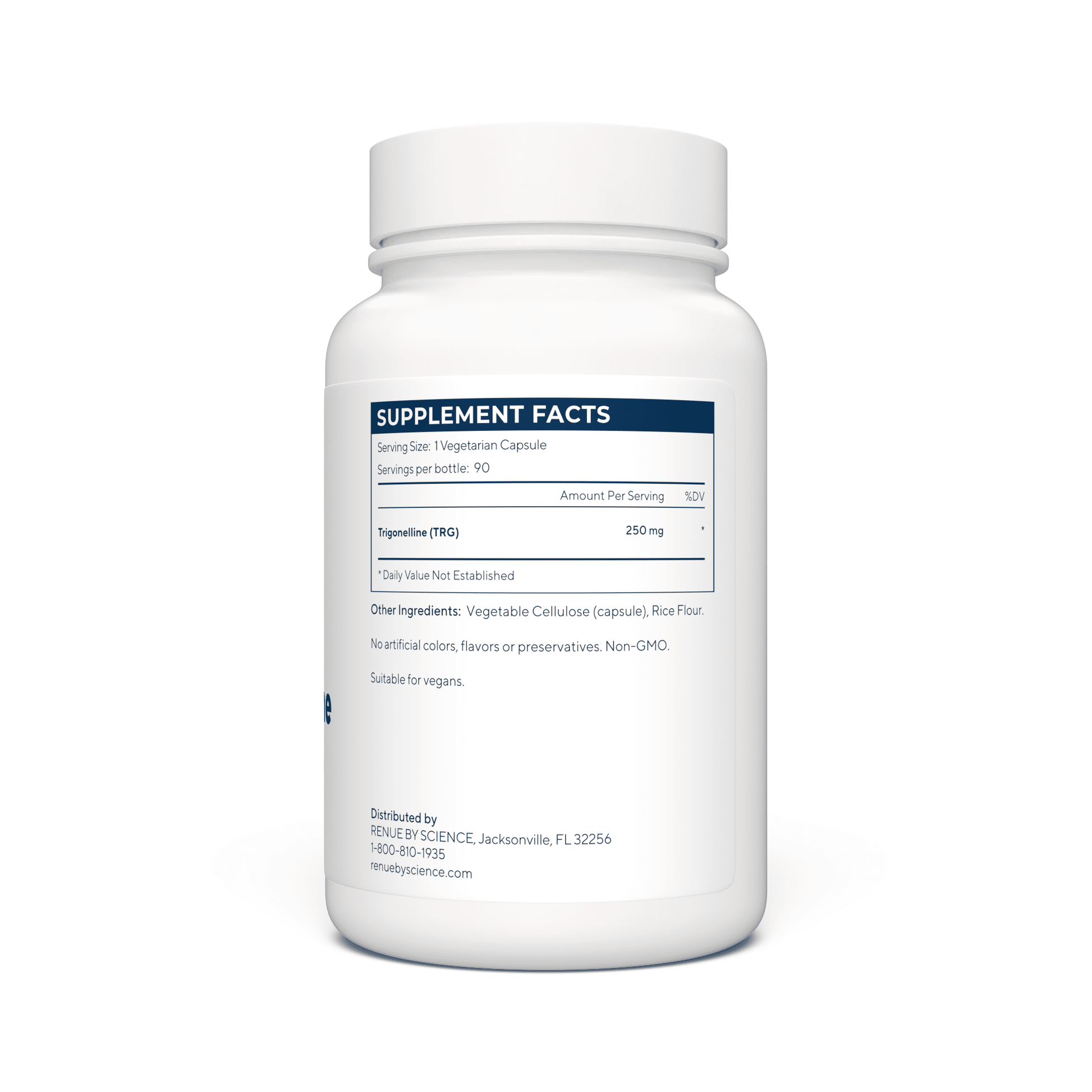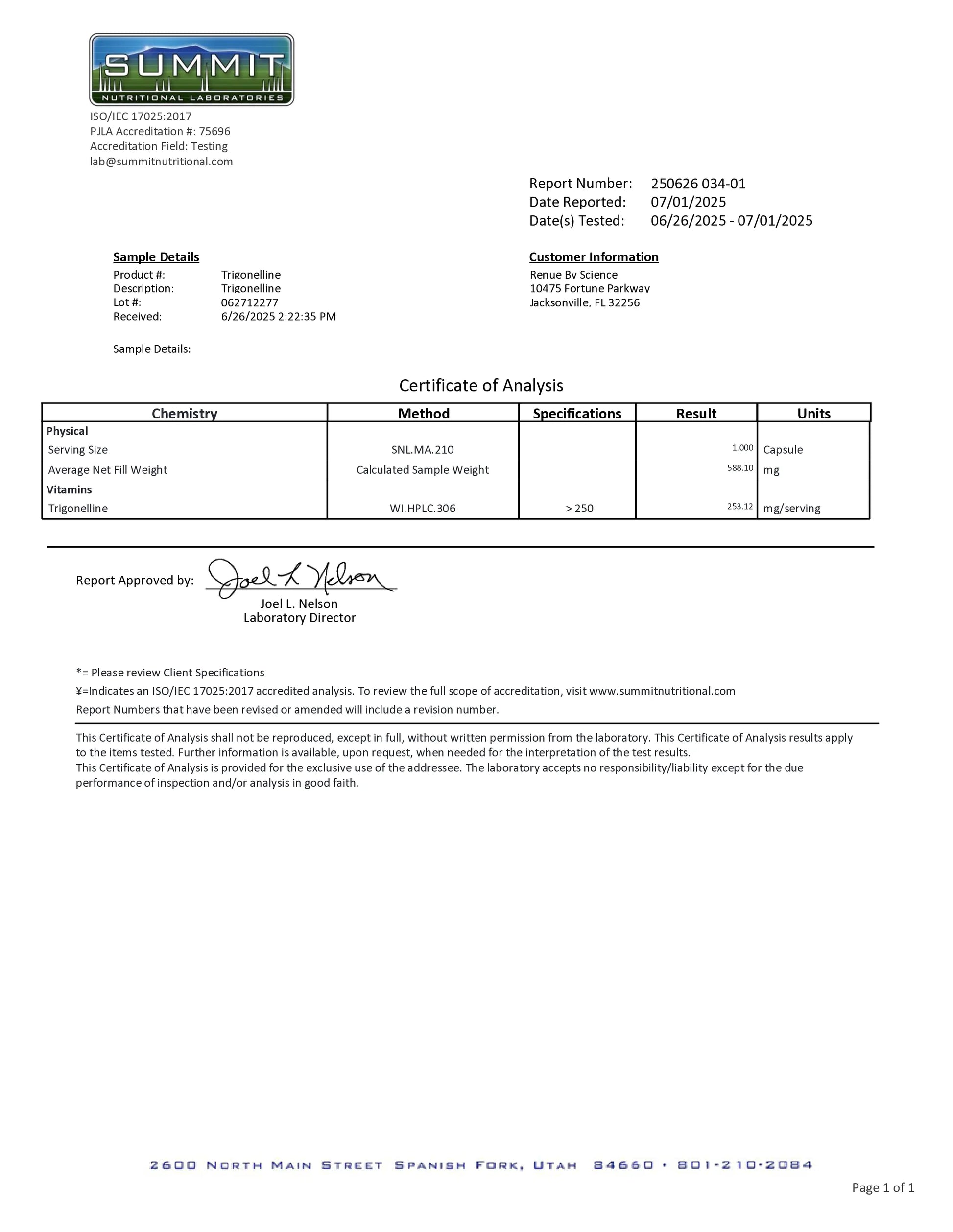
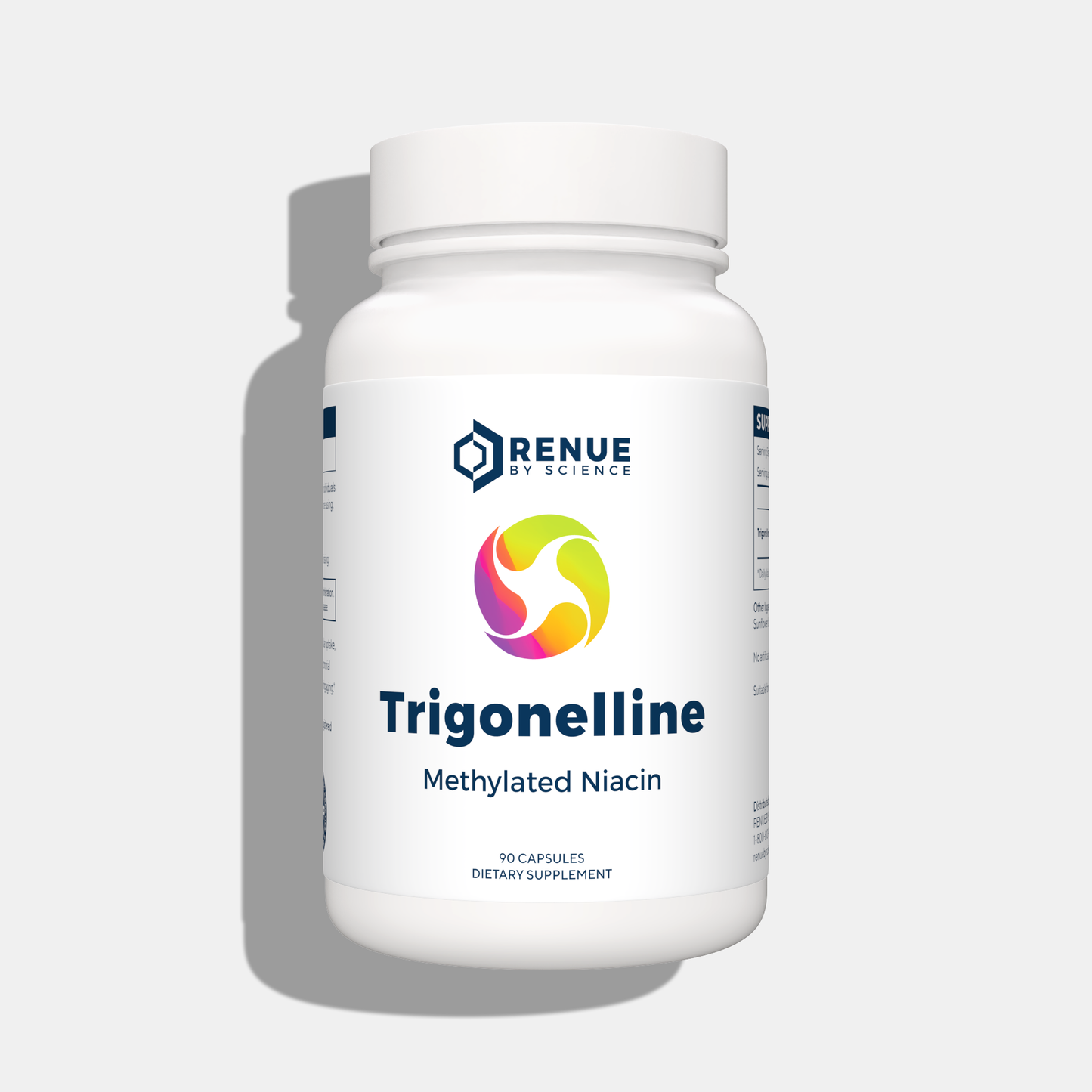

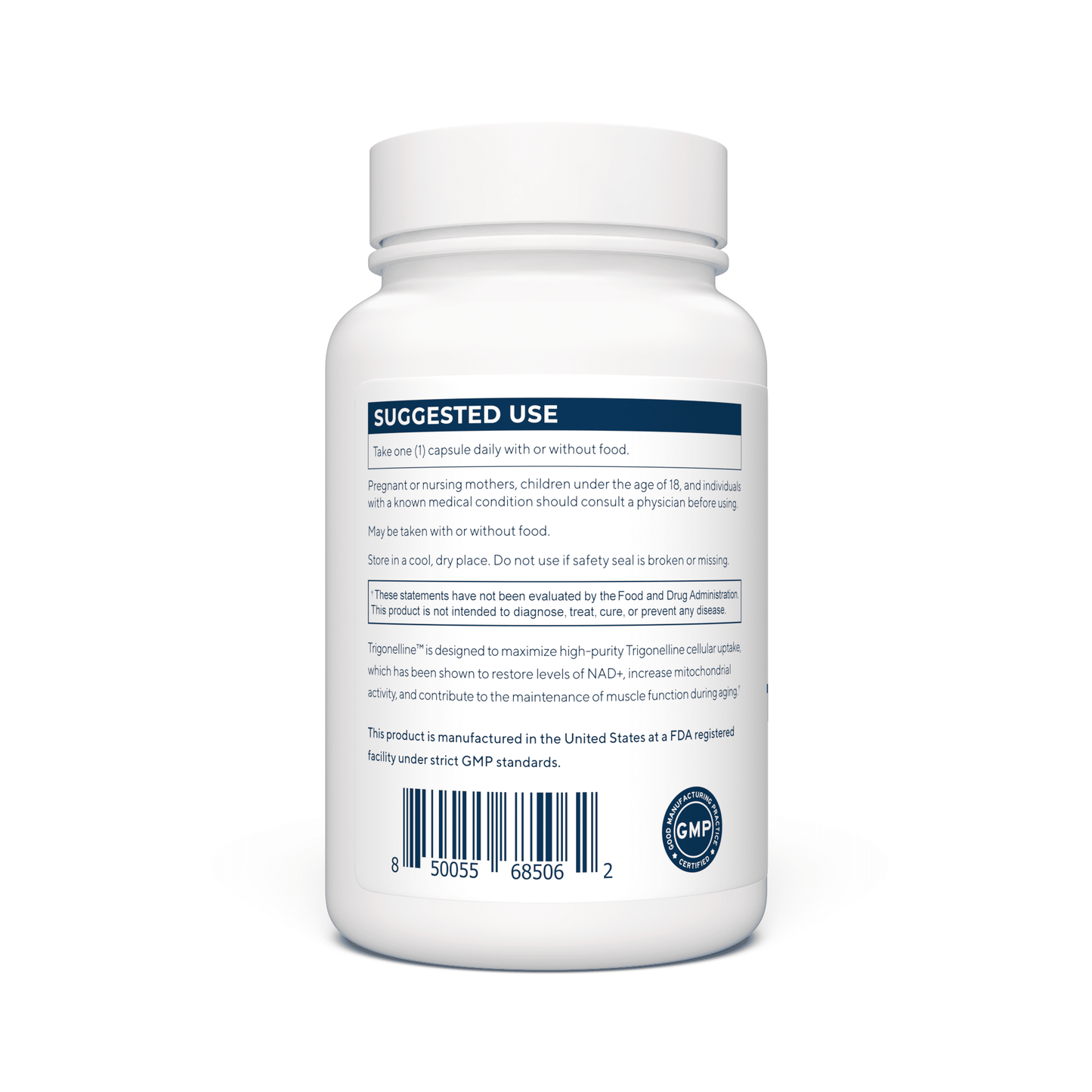
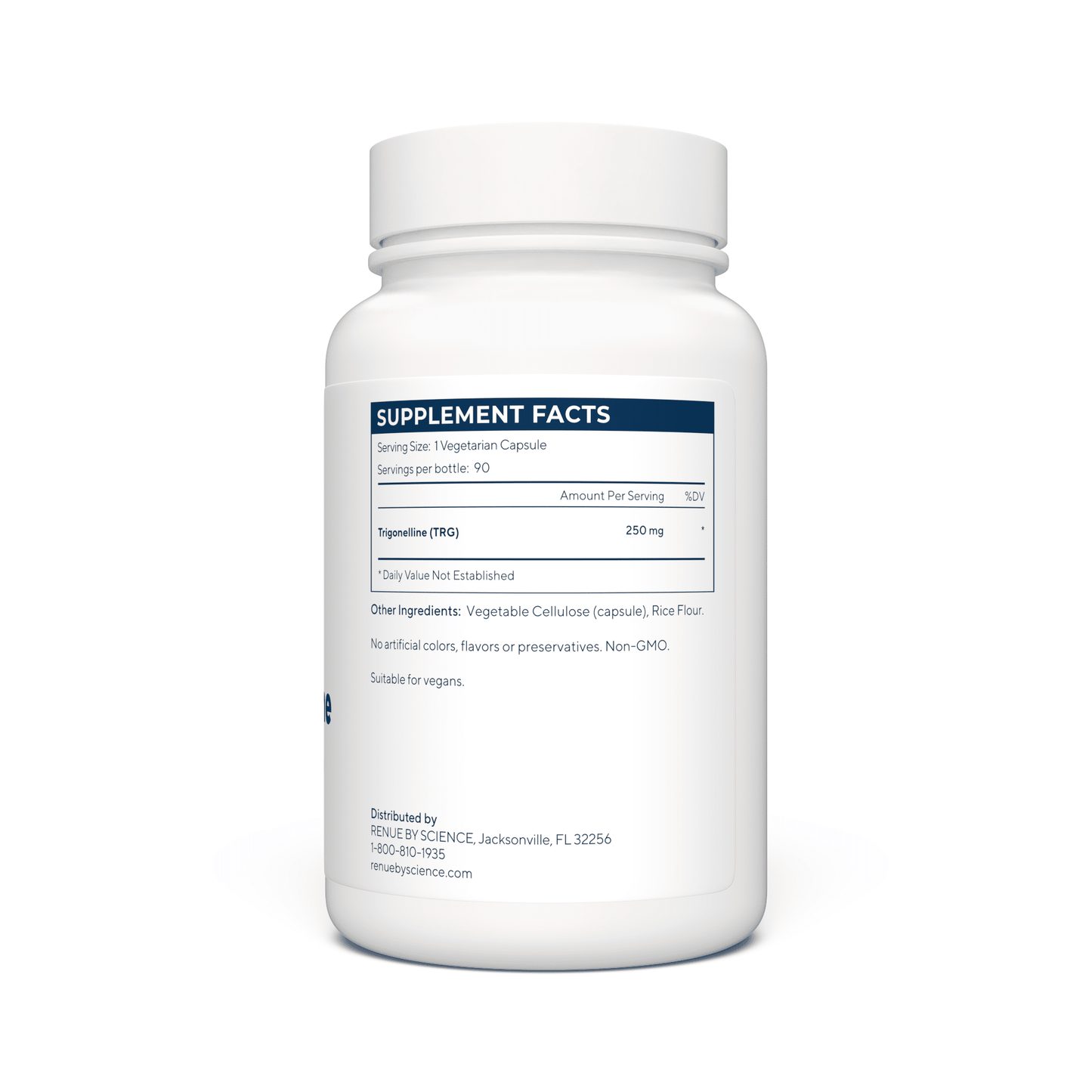
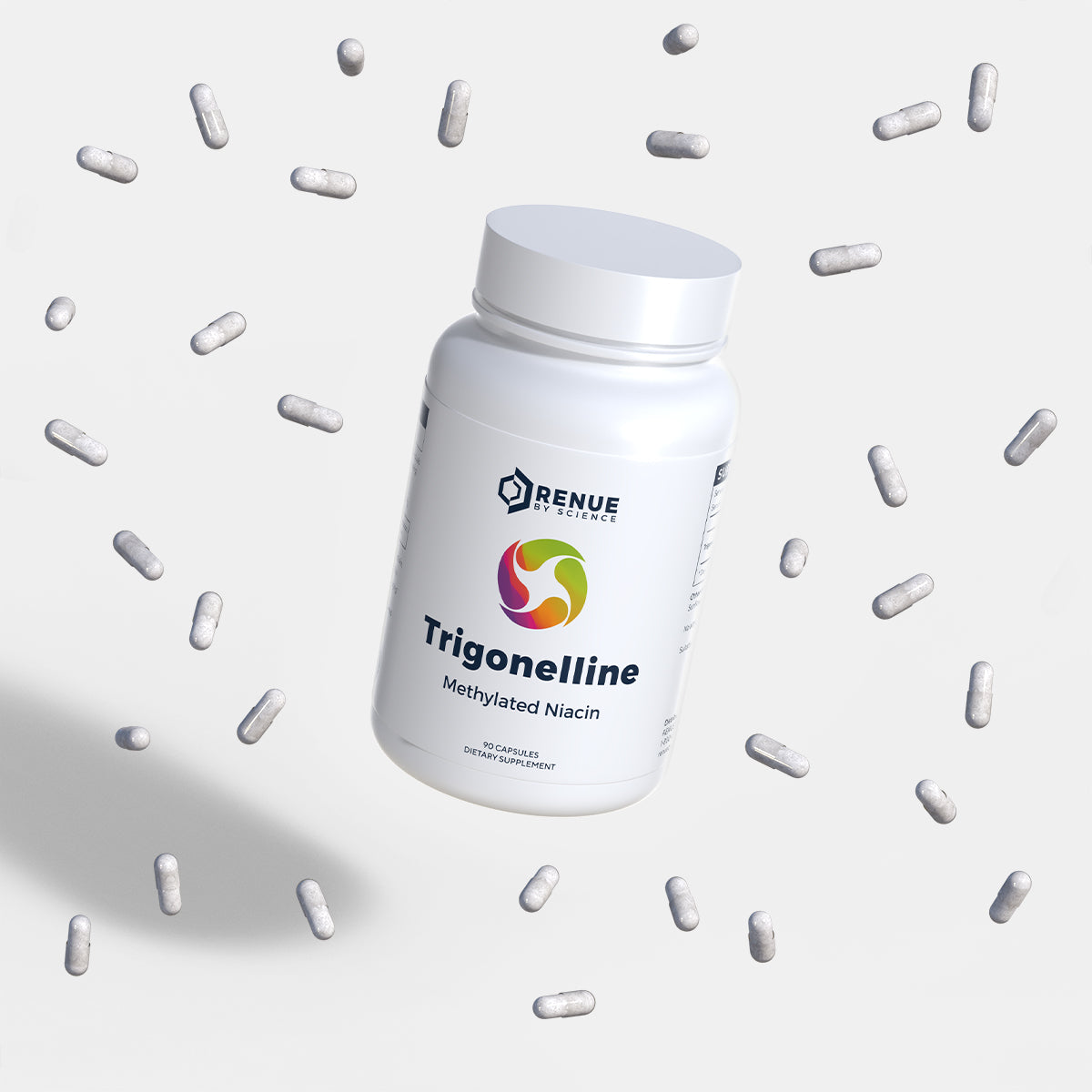
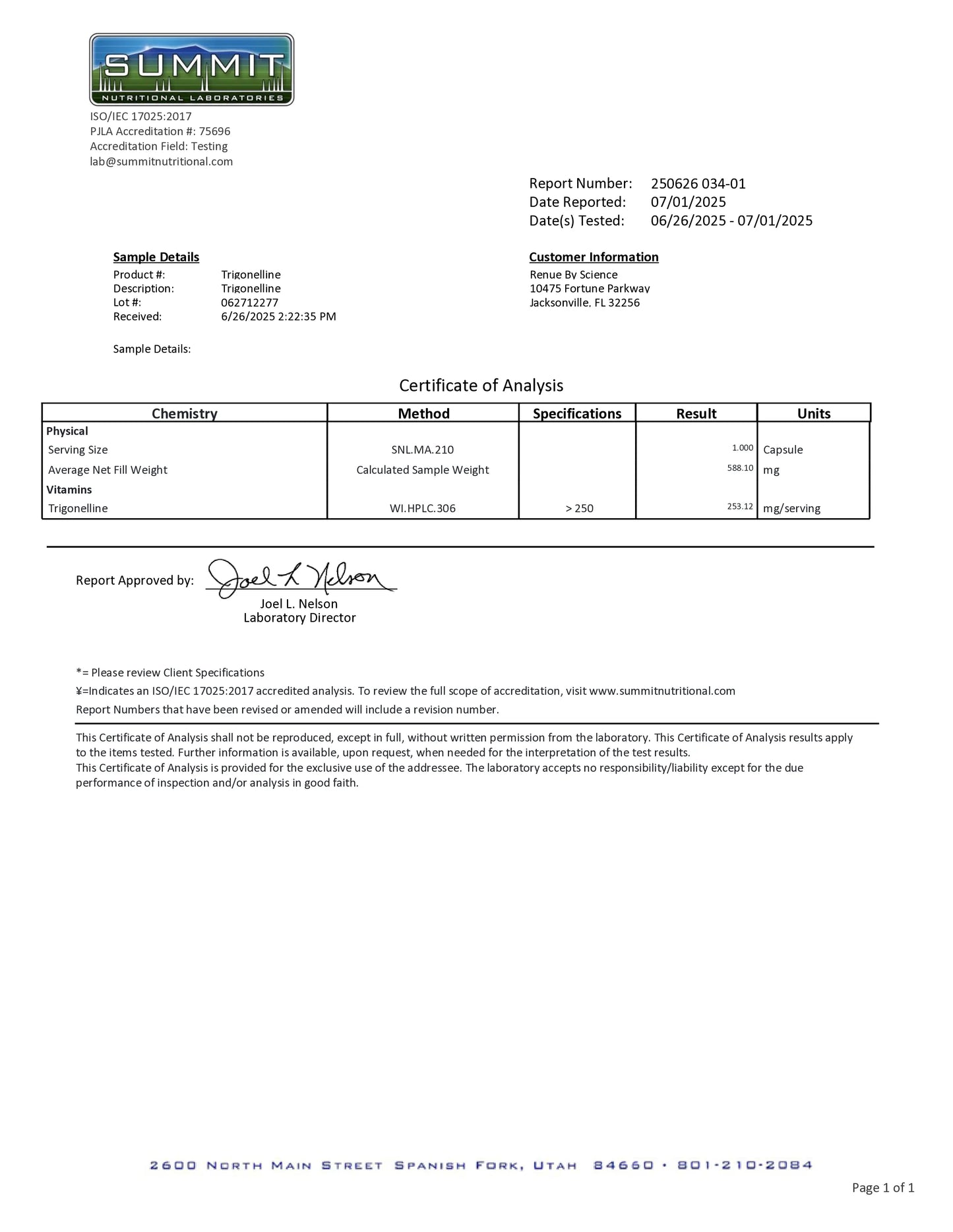
NAD+ Is Essential to Life ...but declines with age
NAD+ precursors and defenders can protect youthful NAD+ levels to maintain healthy energy, strength, and cognition.
NAD+ Is Essential to Life ...but declines with age
NAD+ precursors and defenders can protect youthful NAD+ levels to maintain healthy energy, strength, and cognition.
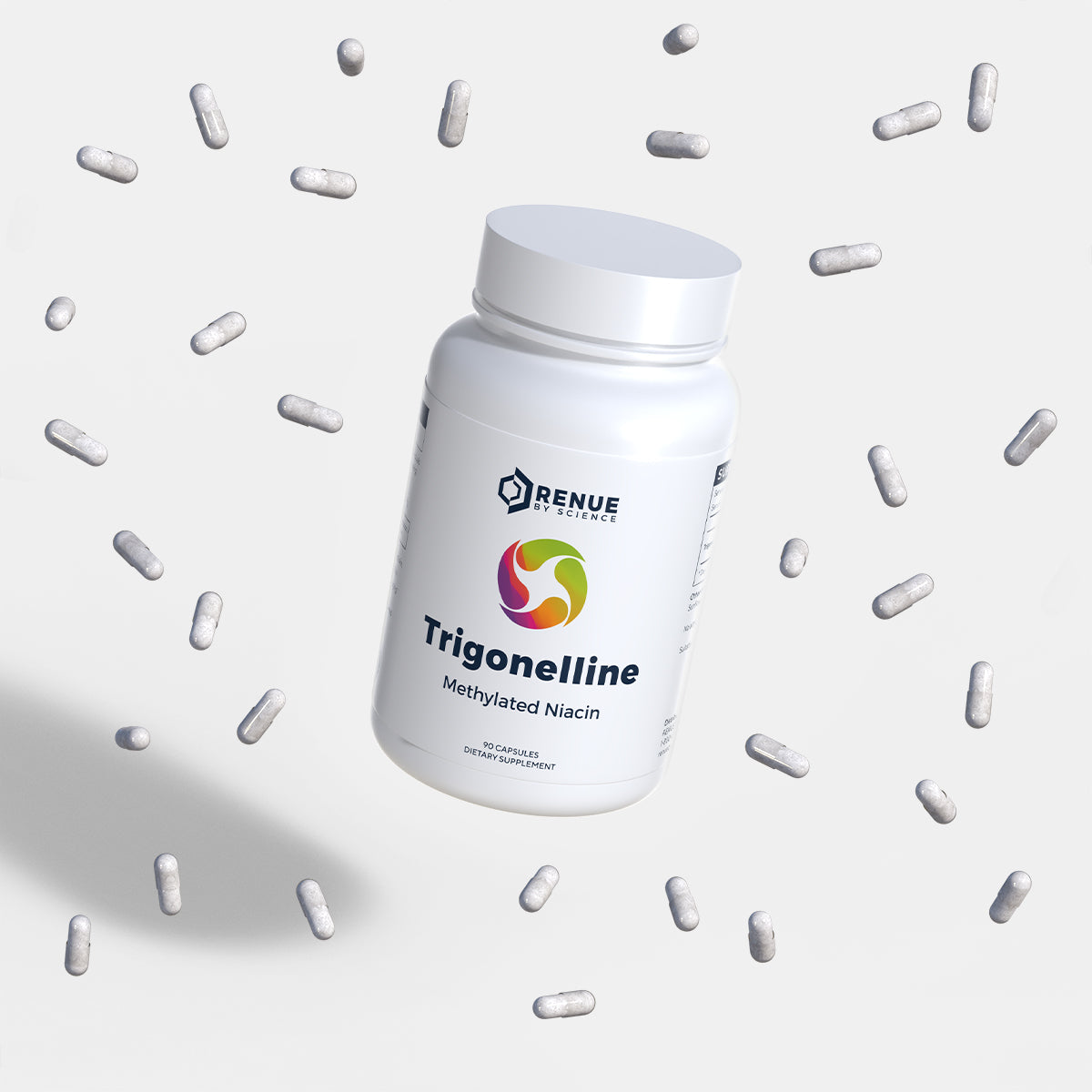
Trigonelline (methylated niacin) is an NAD+ precursor that promotes NAD+ production in muscle cells, a property not observed in other NAD+ boosters like NMN or NR. It accomplishes this through conversion in the Preiss-Handler pathway, unlike other NAD+ precursors which utilize the Salvage pathway. Its innate bioavailable structure allows it to survive digestion, cross the blood-brain barrier, and directly stimulate NAD+ production in muscle, brain, and other tissues.
Trigonelline, as a methylated form of Niacin, actively promotes NAD+ restoration in muscle cells. While NMN and NR can increase NAD+ metabolites in muscle, there has been no evidence to indicate that either of these precursors actively increase NAD+ concentration in muscle, making Trigonelline the only precursor known to have this benefit.
Research shows that Trigonelline remains stable in circulation for more than 72 hours, compared to NR and NMN which are both rapidly degraded to NAM within only a few hours.
Consistent Trigonelline use can elevate NAD+ levels to support critical cellular functions including energy production, DNA repair, and cellular signaling:
- Enhanced NAD+ Synthesis: Promotes NAD+ production via the Preiss-Handler pathway, essential for cellular energy and repair.
- Cognitive Support: Crosses the blood-brain barrier, supporting cognitive function and protecting against age-related cognitive decline through protection of NAD+ stores in neurons.
- Metabolic Regulation: Acts as a methyl donor in one-carbon metabolism, supporting methylation processes crucial for energy production and genetic expression.
- Cardiovascular Health: Promotes the integrity of blood vessels and heart muscle, supporting endothelial function and circulatory health.
- DNA Repair: Encourages cellular repair mechanisms and maintains DNA integrity, helping prevent mutations and supporting natural defenses against environmental stress.
- Muscle Health: Protects against muscle loss and promotes muscle strength, crucial for maintaining physical fitness and metabolic health with aging.
- Glucose and Lipid Management: Enhances insulin sensitivity and glucose uptake, stabilizing blood glucose levels. Modulates lipid metabolism by inhibiting lipogenic enzymes and promoting lipoprotein lipase activity, improving lipid profiles.
We use acid-resistant capsules to contain our trigonelline, which protects it against digestion and promotes absorption in the gut, where it's taken up at a slower pace to reach more tissues.
Trigonelline’s bioavailability and ability to cross the blood-brain barrier enable it to exert systemic benefits, supporting cognitive, cardiovascular, and metabolic health. It supports in glucose regulation by enhancing insulin receptor signaling and facilitates lipid management by influencing key enzymes in lipid metabolism.
Which NAD+ Precursor Is Best?
NAD+
This central coenzyme is directly involved in redox reactions and serves as a substrate for energy production enzyme activity, including sirtuins and poly(ADP-ribose) polymerases (PARPs), which regulate cellular metabolism, DNA repair, and epigenetic modifications.
NMN
This NAD+ precursor, which is directly converted to NAD+ through the NMNAT enzyme in the Salvage Pathway, has been shown to effectively increase intracellular NAD+ levels in numerous clinical trials, thereby enhancing mitochondrial function, energy production, and the activity of NAD+-dependent enzymes.
NR
This NAD+ precursor, which is converted to NAD+ through the Preiss-Handler Pathway, has also demonstrated the ability to increase NAD+ levels in cells. It supports cellular repair mechanisms, particularly those involved in DNA damage response and oxidative stress mitigation. By buttressing NAD+ levels, NR promotes the activation of sirtuins and PARPs, which protect genomic stability and regulating cellular metabolism.
Trigonelline
Trigonelline promotes cellular NAD+ production differently than NMN or NR. This methylated form of niacin offers several advantages: exceptional stability in the bloodstream, slow release into target tissues, non-flushing, protection against stomach digestion, and direct NAD+ increase in muscle tissues.
How Trigonelline Works
How Trigonelline Works
How Trigonelline Works
Certifications
Supported by Science

